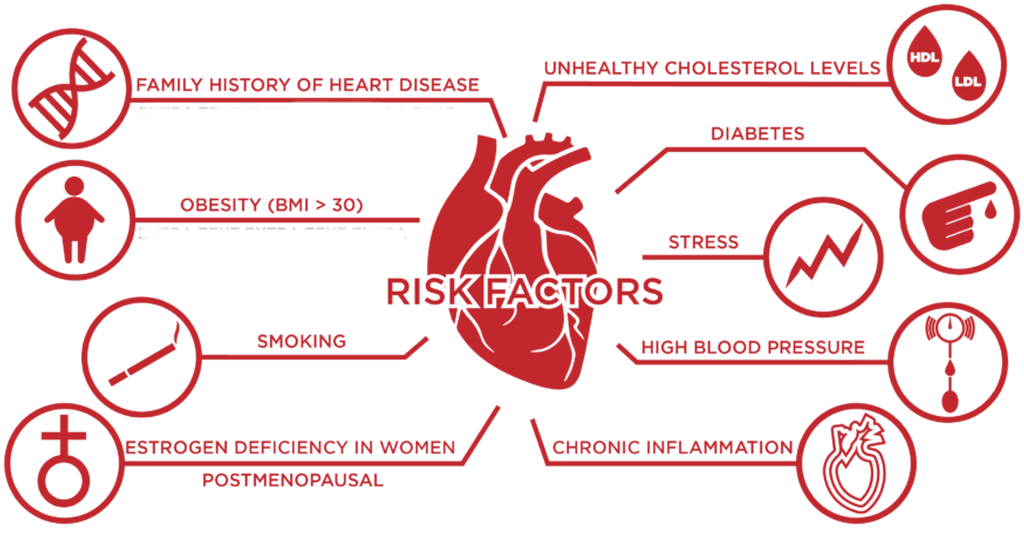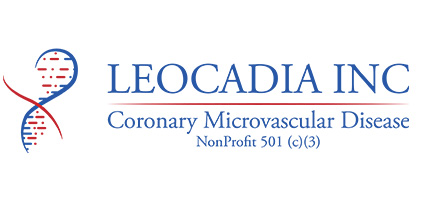Raising Resources & Awareness to Conquer Coronary Microvascular Disease
HEALTHY HEARTS, HAPPY LIVES
As we work to create light for others, we naturally light our own way.
EDUCATE, RESEARCH, INSPIRE
OUR MISSION
To raise awareness of Coronary Microvascular Disease serving as a resource for patients and providers to enhance diagnostics and treatment outcomes.
RAISING RESOURCES & AWARENESS
MEET SUE
From the Keystone State to the Golden State, Sue Shershenovich is on a mission.
EDUCATE, RESEARCH, INSPIRE
WHO WE SUPPORT
The individuals & organizations researching diagnostic strategies and treatment management for patients.
IN THE NEWS
WHAT IS CORONARY MICROVASCULAR DISEASE?
IN A NUTSHELL
Coronary Microvascular Disease (MVD), also known as “small vessel disease” is a type of coronary heart disease that affects the heart’s smallest coronary arteries, arterioles and capillaries. It is a condition where the walls of the small arteries in the heart are damaged or diseased. MVD is different from traditional coronary artery disease (CAD) where plaque builds up in the heart’s large arteries and leads to blockages (i.e., obstructions) that limit or prevent oxygen rich blood from reaching the heart muscle. Source: The National Heart, Lung, and Blood Institute
In Coronary MVD:
- It’s often diagnosed after a doctor finds little or no obstructions in the main arteries of your heart, despite having symptoms of heart disease.
- Walls and the inner lining of the arteries are damaged or diseased
- Arteries spasm (tighten) – Spasms of the small coronary arteries also can decrease oxygen-rich blood flow moving through the arteries. This too can prevent oxygen rich blood from reaching the heart muscle.
- Plaque doesn’t create blockages (i.e., non-obstructive) in these vessels as it does in the hearts large arteries.
HOW MANY PEOPLE ARE AFFECTED?
HEART DISEASE IS THE LEADING CAUSE OF DEATH FOR BOTH MEN AND WOMEN. ABOUT 630,000 AMERICANS DIE FROM HEART DISEASE EACH YEAR – THAT’S 1 IN EVERY 4 DEATHS.
Heart Disease is the leading cause of death for women in the United States, killing 289,758 women in 2013 – that’s about 1 in every 4 female deaths. Although heart disease is sometimes thought of as a “man’s disease,” around the same number of women and men die each year of heart disease in the United States. Despite increases in awareness over the past decade, only 54% of women recognize that heart disease is their number 1 killer. About two-thirds (64%) of women who die suddenly of coronary heart disease have no previous symptoms. Even if you have no symptoms, you may still be at risk for heart disease. Source: cdc.gov
BUDGET CUTS
In addition, the proposed budget cut to the NIH for 2017 was 18% or $1.2 billion and funding for 2018 calls for slashing the budget by about a fifth, or $5.8 billion. Luckily under a bipartisan spending deal the actual NIH funding will get a $2 billion boost through the end of September 2017. This is a good sign now but it’s not clear it will be a sustainable pattern for the future.
RESULTS
The National Institutes of Health (NIH), the world leader in medical research, supports studies dedicated to acquiring new knowledge to help prevent, detect, diagnose and treat disease and disability. The decline in the death rates from cardiovascular disease (CVD), including coronary heart disease and stroke, can be directly linked to NIH-supported research. Despite these benefits the agency is chronically underfunded, especially for heart and stroke research. The NIH invests only 4% of its budget on heart research and a mere 1% on stroke research.
UNDER FUNDING
Based on an Infographic “WHERE WE DONATE VS. DISEASES THAT KILL US” Heart Disease is the #1 “DISEASE THAT KILLS US” [i.e., deaths (US)] 596,577 compared with Breast Cancer which is the #4 “DISEASE THAT KILLS US” [i.e., deaths (US)] 41,374.
Also, Based on an Infographic “WHERE WE DONATE VS. DISEASES THAT KILL US” Breast Cancer – Komen Race for the Cure, is the #1 “WHERE WE DONATE” (i.e., money raised) $257.85M compared with Heart Disease – Jump Rope for Heart, which is the #3 “WHERE WE DONATE” (i.e., money raised) $54.1M.
Source: iflscience.com/health-and-medicine/infographic-shows-differences-between-diseases-we-donate-and-disease-kill-us/ Source: Death statistics from 2011 CDC report. Money raised from listed charities.
Learn how to spot the signs
While many signs and symptoms of coronary microvascular disease (MVD) are often similar to the more common type of heart disease this should prompt evaluation by your doctor for coronary heart disease. Although you may not receive a conclusive diagnosis, if your symptoms persist consider further evaluation for MVD.
Coronary MVD symptoms often are first noticed during routine daily activates (such as shopping, cooking, cleaning, and going to work) and times of mental stress. It’s less likely that women will notice these symptoms during physical activity (such as jogging or walking fast). This differs from CHD, in which symptoms often first appear while a person is being physically active – such as while jogging, walking on a treadmill, or going up stairs.
While chest pain is the most common symptom of a heart attack, women can have symptoms that aren’t related to chest pain at all. They need to be on the lookout for other, subtler symptoms.
If left untreated, MVD forces your heart to work harder to pump blood. This puts you at risk for heart attack, heart failure, stroke, and sudden cardiac death.
Sources: National Institute of Health | Cleveland Clinic
Many women with coronary MVD have angina. Angina is chest pain or discomfort that occurs when your heart muscle doesn’t get enough oxygen-rich blood. Angina may feel like pressure or squeezing in your chest. Angina pain may even feel like heart burn or indigestion. Angina also is a common symptom of CHD. However, the angina that occurs in coronary MVD, the chest pain usually lasts longer than 10 minutes, and it can last longer than 30 minutes.
As intricate as our body’s systems are, they are very adept at giving signals when there is something wrong. When there is a problem with the heart, it triggers nerves in that area, but you sometimes feel pain elsewhere. Pain in the jaw, back or arms may signal a heart condition, especially if the origin is hard to pinpoint (e.g., there is no specific muscle or joint that aches).
Here are some other signs to look out for:
- Women can have pain in either arm – not just the left one like many men.
- Pain in the lower or upper back often starts in the chest and spreads to these areas
- The pain is sometimes sudden, not due to physical exertion, and can wake you up at night.
- You may feel pain that is specific to the left, lower side of the jaw.
Pain in the back, neck, or jaw is a more common heart attack symptom for women than it is for men.
This symptom can come on suddenly. It may occur while you are at rest or with minimal physical activity. You may struggle to breathe or try taking deep breaths. Shortness of breath may start before or at the same time as chest pain or discomfort, and can even be your only symptom.
As women age, a lack of exercise and gradual weight gain cause issues like shortness of breath. But this symptom can signal a heart problem when it happens in certain situations:
- Sudden shortness of breath without exertion
- Breathlessness that continues to worsen over time after exertion
- Shortness of breath that worsens when lying down and improves when propping up
- Shortness of breath accompanied by other symptoms such as chest pain or fatigue
Sudden and unusual tiredness or lack of energy is one of the most common symptoms of heart attack in women, and one of the easiest to ignore. It can come on suddenly or be present for days. More than half of women having a heart attack experience muscle tiredness or weakness that is not related to exercise.
Like many women, you’re probably busy most of the time. You may take care of a family, run a household, work outside the home and care for aging parents. You are probably also tired a lot of the time. Most likely this is normal. But you should pay attention to fatigue if it is new or dramatic. Here’s what to watch out for:
- You are suddenly worn out after your typical exercise routine
- You aren’t exerting yourself, but have fatigue or a “heavy” chest
- Simple activity like making the bed, walking to the bathroom or shopping makes you excessively tired.
- Although you feel exceptionally tired, you also experience sleep disturbance.
Unlike in the movies, most heart attacks do not make you pass out right away. Instead, you may suddenly feel dizzy or light-headed.
Women are twice as likely as men to experience nausea, vomiting, or indigestion during their heart attack. These feelings are often written off as having a less serious cause. Remember, nausea and vomiting may be signs that something is seriously wrong, especially if you have other symptoms.
Hot flashes are a common complaint for many women during menopause. But this symptom can signal a heart problem when it happens in certain situations:
- Sudden sweating without exertion
- “Stress” sweat (cold, clammy feeling) when there is no real cause for stress
- Sweating accompanied by other symptoms such as chest pain or fatigue.

